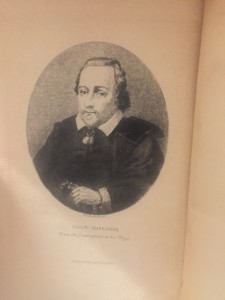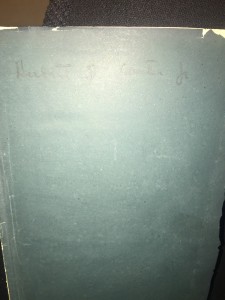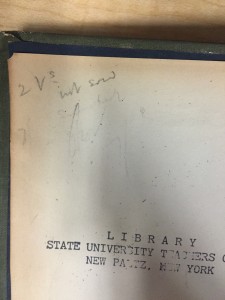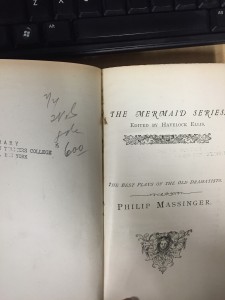Author: arangoj1
St. John’s Wood Assingment #8
St. John’s Wood is an entire district in London composed of very affluent neighborhoods. In Sherlock’s “Scandal In Bohemia” Irene Adler, the only woman who is able to deceive Holme’s, lives in St. John’s Wood.
Using Victorian Google Maps I learned that St. John’s Wood is actually a very big area and it is characterized by many houses, proving to be a wealthy district.
According to Forbes magazine, St. John’s Wood (with the area post code NW8) is the fifth most expensive neighborhood in London based on the average home price in 2007.
In the “Scandal of Bohemia” Irene has a photograph that Holmes needs to get back for his client. Just as he was about to cleverly cheat her into showing him where she had it hidden, Irene outsmarts Holmes. She took the photograph with her and ran off to another country with her new husband. The fact that Irene lived in such a wealthy area is important to the plot because it suggests that independence and wealth contributes to her cleverness.
Using Old Bailey’s Locating London I was able to search for crimes committed in St. John’s Wood. I found one in particular that was very interesting of a married couple, William and Elizabeth Board who were found guilty of coining and given death penalties (“William & Elizabeth Board, Coining”). Counterfeit money was a popular crime in Victorian London with very serious punishments. The irony is that crimes like these occurred in wealthy neighborhoods where people did not need the money, but instead craved the “high” of committing the crime. In todays time a perfect example is celebrities caught stealing, they have the means to get what they desire but it’s the adrenaline they’re after.
Using “Charles Booth Online Archive” I was able to search for St. John’s Wood and with a color key determine the economic status of the neighborhood. For the most part, everything in St. John’s Wood is color red and yellow signifying middle class and the wealthy. An important theme in all of Holme’s stories is “class.” By knowing that class in London was of so much importance and the wealthier you were, the higher your social status was, we are able to infer that Irene Adler who lived in St. John’s Wood was not also wealthy, but also of a high social class. After Holmes was outsmarted by Irene Adler, he began to change his perception of women and gradually accept that women could be “good thinkers” as well.
Works Cited
Donnelly, Sue, and Judith Etherton. “Booth Poverty Map & Modern Map (Charles Booth OnlineArchive).” Booth Poverty Map & Modern Map (Charles Booth Online Archive). London School of Economics & Political Science, n.d. Web. 07 Nov. 2015.
“Google Maps Engine: Map View.” Google Maps Engine: Map View. National Library of Scotland, n.d. Web. 07 Nov. 2015.
Olson, Parmy. “In Pictures: London’s Most Expensive Postcodes.” Forbes. Forbes Magazine, 12 Dec. 2012. Web. 07 Nov. 2015.
“William & Elizabeth Board, Coining, Februrary 1805 (t18050220-79).” Old Bailey Proceedings Online. Web. 6 November 2015.
Google Fusion Assignment
Hi, my topic is different types of dogs!
Card layout:
I included 10 different breeds of dogs and my categories were name of animal, location of origin, country of origin, average life span, image, and size. To see this information you can checkout my google spreadsheet, the link is below!
Spreadsheet: https://docs.google.com/spreadsheets/d/1S-CHkqY1X-iTKZ5NzsDy-VD3nAtCK4EmTxnrqjCpvxE/edit?usp=sharing
Map:
This map corresponds to the location of origin of each dog. There are not 10 individual circles because many dogs came from the United Kingdom and Germany, therefore the dots are clustered together to look like only one.
Bar Graph:
This bar graph is comparing the average life span of different types of dogs. Yorkshire terrier’s have the highest mortality rate while Bull dogs have the lowest.
Pie Chart:
In my pie chart I compared the different sizes of the 10 breeds of dogs I chose.
Network Visualizations Graph:
In this graph I decided to use country of origin because many dogs originate in the same location. For example, the United Kingdom is where Bulldogs, Golden Retrievers, American Pitbull Terirer’s, and Yorkshire Terrier’s originated. A network visualization graph allows this information to be clearly communicated seamlessly to the viewer.
To check out this information on the google fusion tables website click the link below:
https://www.google.com/fusiontables/DataSource?docid=1Vr1K-5MTAt7W1Jim-lCHobopXXlYcehI4rH7y8eW
Video Essay Assignment
Hi! Check out my video..
https://www.wevideo.com/hub#media/ci/492169355?timelineId=486961139
Assignment #5 Google Ngrams
I decided to compare three of the most celebrated holidays which were the words halloween, christmas, and thanksgiving. I expected Christmas to be the most popular in the 19th Century and even today but was surprised to find that the word Thanksgiving was found in 19th Century book way more than both Christmas and Halloween which were pretty equal.
I first did my research on the word halloween because it was the lowest out of the three. I discovered that the word Halloween dates back to 1745 and is of Christian origin. However, it was also referred to as Allhalloween, All Hallows Eve, or All Hallows’ Day. This was not an American tradition until the mid-19th century, large numbers of new immigrants, especially those fleeing Ireland’s potato famine in the 1840s, helped popularize Halloween. Because N-grams is only showing books published in the United States, this could be the main reason as to why Halloween is not as popular as Thanksgiving, which originated the US.
Thanksgiving began with the migration of what we call “Pilgrims” from England to the “New World” for civil and religious liberty. The Pilgrims were very grateful to receive help from the Indians as they arrived so they declared a three-day feast, starting on December 13, 1621, to thank God and to celebrate with their Indian friends. This became known as the first Thanksgiving festival in America which is now celebrated every fourth Thursday in November. Because of it’s origin in the US, the word “thanksgiving” had the most popularity in books published during the 19th Century.
Christmas, the holiday I thought would be the most popular and most written about, turned out to be nowhere in comparison with Thanksgiving. After having done research I learned that in the first half of the 19th century, Christmas was a very different kind of holiday than it is today. People did not have a set way of celebrating. Christmas was not even an official holiday yet. So, communities around the country honored the dayin different ways. Some observed Christmas as an important Christian religious day, honoring the birth of Jesus. Others celebrated the day with parties, music, drinking and eating. And, some communities did not celebrate the day at all. This explains why Christmas is nowhere near as popular as Thanksgiving.
Works Cited
“The History of Christmas in America.” VOA. Web. 8 Oct. 2015.
“Plimoth Plantation.” Who Were the Pilgrims? Web. 8 Oct. 2015.
“What Is the Origin of America’s Annual Thanksgiving Day?” • ChristianAnswers.Net. Web. 8 Oct. 2015.
Assignment #3: Book Traces
I want to start off by saying that Sojourner truth library is extremely intimidating. This was my first time searching for books at a college library. It was very tedious searching for a 19th century book that also had 19th century marginalia. After over an hour of picking the books that looked most worn out (this was my strategy) I finally hit the jackpot when I picked up “Phillip Massinger” edited with an introduction and notes by Arthur Symons. The title alone was very confusing because Phillip Massinger is the main author and it contains “the best plays of the old dramatists.”
http://www.booktraces.org/book-submission-philip-massinger
However, after reading through the book it was made clear that Phillip Massinger was the author of numerous plays that constituted the book and Arthur Symons provided readers with a bibliography of Phillip Massinger and spoke about his plays.

“Phillip Massinger” was published in London in 1887 and its publisher is London Vizetelly.
As soon as you open the book,on the inner hardcover there is a name that reads: Hailey S. Carles Jr. and is barely visible but after 5 minutes of analyzing each letter with a flashlight I was able to make out the name.
After searching all over the internet I was not able to trace this name to any person. This was probably because it was just an average person in London, who owned this book and wrote their name to show possession.
The book itself is very old and smells like it as soon as you open it. By this I mean it literally smells “dusty” and made me sneeze as I flipped through the pages.
The other marginalia that I found (on the first 2 pages after opening the book) was for the most part illegible and I was unable to understand its purpose.
There is however, the number 600 clearly written which could indicate what is equivalent to 900 dollars ( a lot of money back then).
What I found most interesting were the way some pages were set up (shut together) making the pages in the middle of that binding hard to read.
From pages 9 to 96 there are 11 “sections” where the binding is like this, making it hard to read what is in between them.
This seems to have been done purposefully but I am not sure for what reason or if this is a characteristic of 19th century books but it was very interesting and different.
Overall I enjoyed learning about marginalia and having the chance to actually find a 19th century book with personal hand writing from the 19th century. Book traces and preserving this marginalia is important to understanding how people used books in the 19th century.
Assignment #2 Omeka
Here are my items:
http://holmesiana.net/items/show/126
http://holmesiana.net/items/show/135
http://holmesiana.net/items/show/105
Collection:
http://holmesiana.net/collections/show/27
Exhibit:
http://holmesiana.net/exhibits/show/drugabuse/drugabuse
Online Assignment #1: Researching Victorian London
As I navigated through the Dictionary of Victorian London I came across the controversial topic at the time of Women in Public and more specifically the rise of “Ladies clubs” as they were suspected and referred to in Victorian London during 1869. This article was from Punch, a newspaper taunting the idea that women could possibly get together and discuss what’s on their minds. “A LADIES’ Club is said to be in process of formation, how the male mind shudders at this most tremendous news!” The very first line of this published article captures the inequality between men and women and the outrageous belief of the narrowness of the women mind. Men quickly became worried that the involvement of their wife in this club would result in the interest of other men, dinner no longer being cooked, and the end to her “maternal duties.” This atrocious thinking by men is still seen in many parts of the world and is actually worse in some places than it was in 19th century London. India for example is a country where being a women means you will most likely be abused. National Crime Records Bureau reveal that a crime against a women is committed every three minutes, a women is raped every 29 minutes, a dowry death occurs every 77 minutes and one case of cruelty committed by either the husband or relative of the victim occurs every nine minutes. Patriarchy and the belief that women aren’t entitled to rights is the main reason for the abuse toward women seen in India. Women currently have very little opportunity to become educated in India, let alone form a club to talk about wha they may please to. Although throughout the years this oppression of women was no longer seen as predominately in London, it is still occurring in many parts of the world today.















